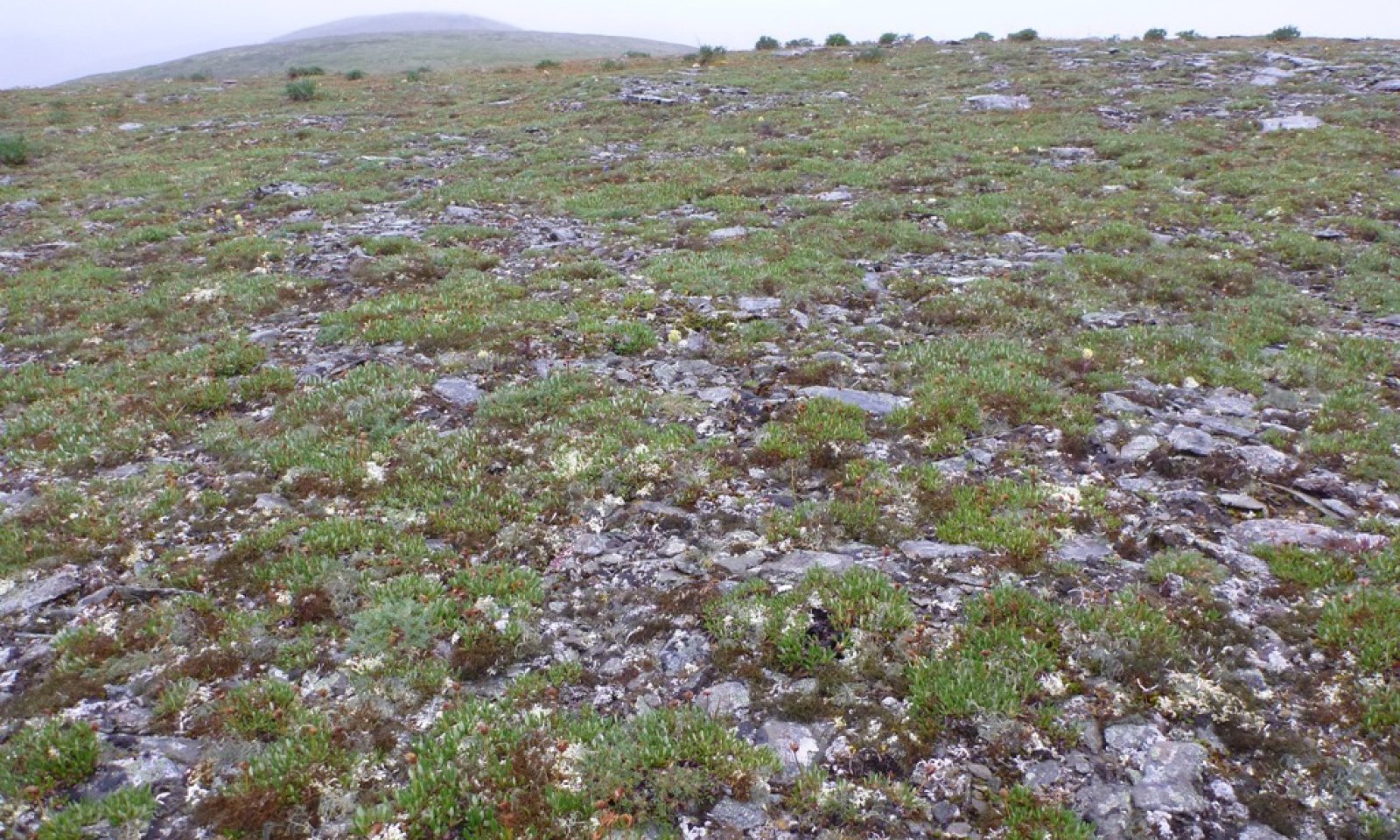
Alpine dwarf scrub gravelly slopes
Circle-spoke model
Scenario model
Current ecosystem state
Select a state
Management practices/drivers
Select a transition or restoration pathway
-
No transition or restoration pathway between the selected states has been described
Target ecosystem state
Select a state
State 1
Reference State



Description
The reference plant community (community 1.1) is dryas dwarf scrub (Viereck et al. 1992). There are three plant communities in the reference state related to either snowpack or fire.
Community 1.2 occurs in sheltered positions that have atypically deep snowpack. These sheltered positions are small in size, occur in close proximity to community 1.1, and commonly occur on the leeward side of rock outcrops and/or sharp ridges or on steep northing facing slopes. These sheltered positions were often observed to have snowpack that persisted for longer durations of time compared to the more wide-spread community 1.1. This persistent snowpack led to community 1.2 having slightly moister soils. Both of these communities have the potential to burn resulting in community 1.3.
Cryoturbation is process associated with this state that results in the formation of non-sorted circles, sorted circles, and sorted stripes. Cryoturbation is a collective term used to describe all soil movements due to frost action, characterized by folded, broken and dislocated beds and lenses of unconsolidated deposits (Schoeneberger and Wysocki 2017). Since non-sorted circles are uncommon for this site and data did not support these features having a vegetation mosaic, no alternative state was developed for this site (see R231XY134AK for a site that does have this alternate state). No alternative state or plant communities were developed for sorted circles and stripes as they are primarily barren rock.
Submodel
Model keys
Briefcase
Add ecological sites and Major Land Resource Areas to your briefcase by clicking on the briefcase (![]() ) icon wherever it occurs. Drag and drop items to reorder. Cookies are used to store briefcase items between browsing sessions. Because of this, the number of items that can be added to your briefcase is limited, and briefcase items added on one device and browser cannot be accessed from another device or browser. Users who do not wish to place cookies on their devices should not use the briefcase tool. Briefcase cookies serve no other purpose than described here and are deleted whenever browsing history is cleared.
) icon wherever it occurs. Drag and drop items to reorder. Cookies are used to store briefcase items between browsing sessions. Because of this, the number of items that can be added to your briefcase is limited, and briefcase items added on one device and browser cannot be accessed from another device or browser. Users who do not wish to place cookies on their devices should not use the briefcase tool. Briefcase cookies serve no other purpose than described here and are deleted whenever browsing history is cleared.
Ecological sites
Major Land Resource Areas
The Ecosystem Dynamics Interpretive Tool is an information system framework developed by the USDA-ARS Jornada Experimental Range, USDA Natural Resources Conservation Service, and New Mexico State University.
